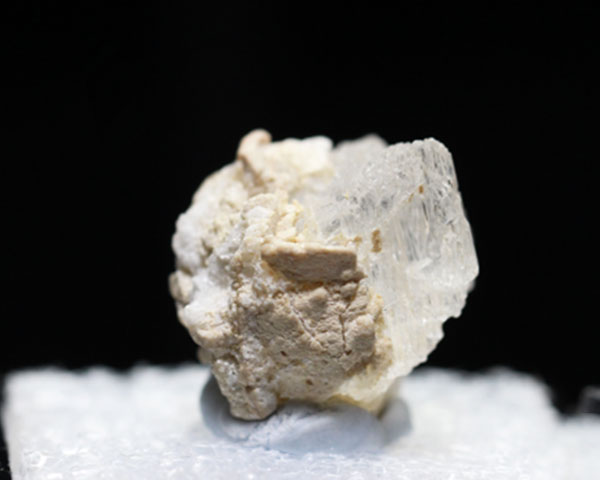Beryllonite is a rare sodium beryllium phosphate mineral. It is mainly formed in pegmatites developed by metasomatism and coexists with quartz, tourmaline, albite, and muscovite.
Beryllonite is mainly produced in Brazil, Finland, and Zimbabwe. However, gem-grade crystals are only found in Maine, USA.
Because it is very rare, it is treasured by gem collectors. The size of the gem is generally about 2 carats; according to reports, the maximum is 5.7 carats.
- Monocline system,
- The crystals are usually in the form of plates and columns.
- The colors are mainly white, light yellow and colorless.
- Transparent to sub-transparent,
- Glass luster, pearl luster on cleavage surface.
- Biaxial negative crystal,
- Refractive index 1.55~1.56,
- Birefringence 0.009,
- Dispersion 0.010,
- Relative density 2.87,
- Mohs hardness 5.5~6.

Basic Properties of Beryllonite
chemical composition
The chemical formula of Beryllonite is NaBe [PO4], which is a phosphate of sodium beryllium.
form
Beryllonite belongs to the monoclinic system, which is often in the form of a pseudo-rhombic plate or plate column.
physical characteristics
- Glass luster to pearl luster,
- transparent.
- Most of them are white, colorless to light yellow or light green.
- Biaxial crystal is negative, 2V=68 °,
- the refractive index is N=1.601~1.604, Nm=1.558~1.601, N=1.592~1.595,
- birefringence is 0.009~0.010, and
- dispersion is 0.010.
- No polychrome, inert under ultraviolet fluorescence.
- One group {010} is completely cleaved, and the other group (100} is moderately cleaved.
- The fracture surface is shell shaped.
- The Mohs hardness is 5.5 ~ 6.
- The density is 2.82 (+0.05, -0.03) g/cm. It is brittle.
How to identify Beryllonite
Beryllonite may be mixed with scapolite, quartz, and berylite, but these minerals are uniaxial crystals. However, Beryllonite is a biaxial crystal.
It is also similar to feldspar, which can be distinguished according to the optical characteristics and the higher density of Beryllonite.
Where is Beryllonite from
Beryllonite is found in granite pegmatite and coexisted the Phenakite, beryl, quartz, albite, muscovite, tourmaline, and smoky crystal. Gem-grade crystals are produced in in Stoner and Newry, Maine, USA.
Conclusion:
Beryllonite is a rare sodium beryllium phosphate mineral, but it is not a good gem material.
Beryllonite is colorless, white to light yellow. It is colorless, transparent to translucent under transmission light, and occurs in granite and alkaline pegmatite. It is a rare secondary mineral.
